Related Research Articles

Cassini–Huygens, commonly called Cassini, was a space-research mission by NASA, the European Space Agency (ESA), and the Italian Space Agency (ASI) to send a space probe to study the planet Saturn and its system, including its rings and natural satellites. The Flagship-class robotic spacecraft comprised both NASA's Cassini space probe and ESA's Huygens lander, which landed on Saturn's largest moon, Titan. Cassini was the fourth space probe to visit Saturn and the first to enter its orbit, where it stayed from 2004 to 2017. The two craft took their names from the astronomers Giovanni Cassini and Christiaan Huygens.

New Horizons is an interplanetary space probe launched as a part of NASA's New Frontiers program. Engineered by the Johns Hopkins University Applied Physics Laboratory (APL) and the Southwest Research Institute (SwRI), with a team led by Alan Stern, the spacecraft was launched in 2006 with the primary mission to perform a flyby study of the Pluto system in 2015, and a secondary mission to fly by and study one or more other Kuiper belt objects (KBOs) in the decade to follow, which became a mission to 486958 Arrokoth. It is the fifth space probe to achieve the escape velocity needed to leave the Solar System.

Carolyn C. Porco is an American planetary scientist who explores the outer Solar System, beginning with her imaging work on the Voyager missions to Jupiter, Saturn, Uranus and Neptune in the 1980s. She led the imaging science team on the Cassini mission in orbit around Saturn. She is an expert on planetary rings and the Saturnian moon, Enceladus.
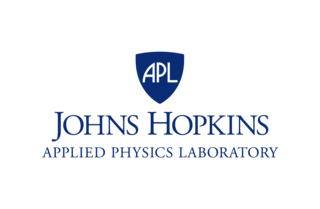
The Johns Hopkins University Applied Physics Laboratory is a not-for-profit university-affiliated research center (UARC) in Howard County, Maryland. It is affiliated with Johns Hopkins University and employs 8,700 people as of 2024. APL is the nation's largest UARC.

The Lunar and Planetary Laboratory (LPL) is a research center for planetary science located in Tucson, Arizona. It is also a graduate school, constituting the Department of Planetary Sciences at the University of Arizona. LPL is one of the world's largest programs dedicated exclusively to planetary science in a university setting. The Lunar and Planetary Lab collection is held at the University of Arizona Special Collections Library.
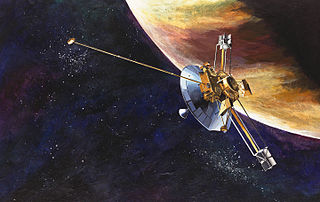
The exploration of Jupiter has been conducted via close observations by automated spacecraft. It began with the arrival of Pioneer 10 into the Jovian system in 1973, and, as of 2023, has continued with eight further spacecraft missions in the vicinity of Jupiter. All of these missions were undertaken by the National Aeronautics and Space Administration (NASA), and all but two were flybys taking detailed observations without landing or entering orbit. These probes make Jupiter the most visited of the Solar System's outer planets as all missions to the outer Solar System have used Jupiter flybys. On 5 July 2016, spacecraft Juno arrived and entered the planet's orbit—the second craft ever to do so. Sending a craft to Jupiter is difficult, mostly due to large fuel requirements and the effects of the planet's harsh radiation environment.
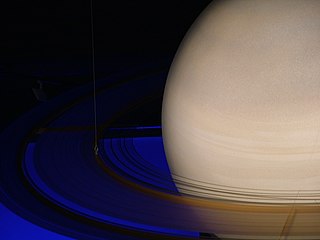
The exploration of Saturn has been solely performed by crewless probes. Three missions were flybys, which formed an extended foundation of knowledge about the system. The Cassini–Huygens spacecraft, launched in 1997, was in orbit from 2004 to 2017.
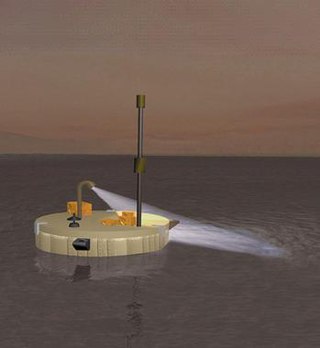
Titan Mare Explorer (TiME) is a proposed design for a lander for Saturn's moon Titan. TiME is a relatively low-cost, outer-planet mission designed to measure the organic constituents on Titan and would have performed the first nautical exploration of an extraterrestrial sea, analyze its nature and, possibly, observe its shoreline. As a Discovery-class mission it was designed to be cost-capped at US$425 million, not counting launch vehicle funding. It was proposed to NASA in 2009 by Proxemy Research as a scout-like pioneering mission, originally as part of NASA's Discovery Program. The TiME mission design reached the finalist stage during that Discovery mission selection, but was not selected, and despite attempts in the U.S. Senate failed to get earmark funding in 2013. A related Titan Submarine has also been proposed.
Io Volcano Observer (IVO) is a proposed low-cost mission to explore Jupiter's moon Io to understand tidal heating as a fundamental planetary process. The main science goals are to understand (A) how and where tidal heat is generated inside Io, (B) how tidal heat is transported to the surface, and (C) how Io is evolving. These results are expected to have direct implications for the thermal history of Europa and Ganymede as well as provide insights into other tidally heated worlds such as Titan and Enceladus. The IVO data may also improve our understanding of magma oceans and thus the early evolution of the Earth and Moon.
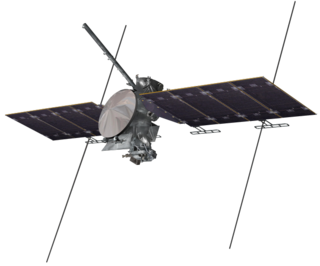
Europa Clipper is a space probe in development by NASA. Planned for launch in October 2024, the spacecraft is being developed to study the Galilean moon Europa through a series of flybys while in orbit around Jupiter.
Nancy Chabot is a planetary scientist at the Johns Hopkins University Applied Physics Laboratory.
Planetary oceanography, also called astro-oceanography or exo-oceanography, is the study of oceans on planets and moons other than Earth. Unlike other planetary sciences like astrobiology, astrochemistry, and planetary geology, it only began after the discovery of underground oceans in Saturn's moon Titan and Jupiter's moon Europa. This field remains speculative until further missions reach the oceans beneath the rock or ice layer of the moons. There are many theories about oceans or even ocean worlds of celestial bodies in the Solar System, from oceans made of diamond in Neptune to a gigantic ocean of liquid hydrogen that may exist underneath Jupiter's surface.
Journey to Enceladus and Titan (JET) is an astrobiology mission concept to assess the habitability potential of Enceladus and Titan, moons of Saturn.

Dragonfly is a planned NASA spacecraft mission to send a robotic rotorcraft to the surface of Titan, the largest moon of Saturn. It is planned to be launched in July 2028 and arrive in 2034. It would be the first aircraft on Titan and is intended to make the first powered and fully controlled atmospheric flight on any moon, with the intention of studying prebiotic chemistry and extraterrestrial habitability. It would then use its vertical takeoffs and landings (VTOL) capability to move between exploration sites.

Double Asteroid Redirection Test (DART) was a NASA space mission aimed at testing a method of planetary defense against near-Earth objects (NEOs). It was designed to assess how much a spacecraft impact deflects an asteroid through its transfer of momentum when hitting the asteroid head-on. The selected target asteroid, Dimorphos, is a minor-planet moon of the asteroid Didymos; neither asteroid poses an impact threat to Earth, but their joint characteristics made them an ideal benchmarking target. Launched on 24 November 2021, the DART spacecraft successfully collided with Dimorphos on 26 September 2022 at 23:14 UTC about 11 million kilometers from Earth. The collision shortened Dimorphos' orbit by 32 minutes, greatly in excess of the pre-defined success threshold of 73 seconds. DART's success in deflecting Dimorphos was due to the momentum transfer associated with the recoil of the ejected debris, which was substantially larger than that caused by the impact itself.
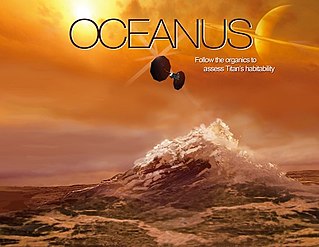
Oceanus is a NASA/JPL orbiter mission concept proposed in 2017 for the New Frontiers mission #4, but it was not selected for development. If selected at some future opportunity, Oceanus would travel to Saturn's moon Titan to assess its habitability. Studying Titan would help understand the early Earth and exoplanets which orbit other stars. The mission is named after Oceanus, the Greek god of oceans.

The Planetary Missions Program Office is a division of NASA headquartered at the Marshall Space Flight Center, formed by the agency's Science Mission Directorate (SMD). Succeeding the Discovery and New Frontiers Program Office, it was established in 2014 to manage the Discovery and New Frontiers programs of low and medium-cost missions by third-party institutions, and the Solar System Exploration program of NASA-led missions that focus on prioritized planetary science objectives. The Discovery and New Frontiers programs were established in 1992 and 2001 respectively, and have launched fourteen primary missions together, along with two missions launched under the administration of the Planetary Missions Program Office. The Solar System Exploration Program was established alongside the office, with three missions planned for launch under the new program.
Damon Paul Simonelli was a planetary scientist who worked for Cornell University and the National Aeronautics and Space Administration (NASA) in the U.S. He was a pioneer in the development of radiative transfer models to analyze astronomical objects.
Ralph D. Lorenz is a planetary scientist and engineer at the Johns Hopkins Applied Physics Lab. whose research focuses on understanding surfaces, atmospheres, and their interactions on planetary bodies, especially Titan, Venus, Mars, and Earth. He currently serves as Mission Architect of Dragonfly, NASA's fourth selected New Frontiers mission, and as participating scientist on Akatsuki and InSight. He is a Co-Investigator on the SuperCam instrument on the Perseverance rover, responsible for interpreting data from its microphone. He leads the Venus Atmospheric Structure Investigation on the DAVINCI Discovery mission to Venus. He is the recipient of the 2020 International Planetary Probe Workshop (IPPW) Al Seiff memorial award, and the 2022 American Geophysical Union's Fred Whipple Award for contributions to planetary science.
References
- ↑ Turtle, Elizabeth Pope (1998). "Finite-element modeling of large impact craters: Implications for the size of the Vredefort structure and the formation of multiple ring craters".
- 1 2 "Elizabeth P. Turtle's CV" (PDF).
- ↑ "Galileo - Overview". NASA Solar System Exploration. Retrieved 2021-03-14.
- ↑ "Overview | Cassini". NASA Solar System Exploration. Retrieved 2021-03-14.
- ↑ "Meet the LROC Team".
- ↑ "NASA's Europa Mission Begins with Selection of Science Instruments". Jet Propulsion Laboratory . 26 May 2015. Retrieved 24 September 2015.
- ↑ NASA Selects Johns Hopkins APL-Led Mission to Titan for Further Development Archived 2018-04-26 at the Wayback Machine . Johns Hopkins Applied Physics Laboratory - Press release. 21 December 2017.
- 1 2 "The mission of a lifetime: a drone on Titan in 2034 (Update)". Phys.org. Agence France-Presse (AFP). 2019-07-04. Retrieved 2019-07-05.
- ↑ Turtle, Elizabeth "Zibi" (2020-08-28), What Saturn's most mysterious moon could teach us about the origins of life , retrieved 2023-11-13
- ↑ ORCID. "Elizabeth P Turtle (0000-0003-1423-5751)". orcid.org. Retrieved 2021-03-14.
- ↑ "JHUAPL - , Elizabeth, Turtle - Science Research Portal". secwww.jhuapl.edu. Archived from the original on 2021-04-18. Retrieved 2021-03-14.